Your tires are where the rubber meets the road – literally – when it comes to the safety and performance of your car. That means, if your tire is leaky, you could be putting your safety at risk.
A leaky tire causes low tire pressure, which can decrease fuel economy, and put you at risk for a blowout. It also decreases the ability of your car to handle properly, making it more difficult to respond to emergency situations or drive in inclement weather.
In this article, we’ll discuss how you can diagnose and fix slow tire leaks. Don’t just ignore that low pressure sensor – check out this guide!
The Most Common Causes Of Slow Tire LeaksThere are three common issues that cause slow tire leaks. Let’s discuss each one of them now.
If your valve stem is damaged, there will be a slow and constant leak. This leak could come from either the body of the valve, or the base of the valve, where it meets the tire.
Contrary to popular belief, puncture damage usually doesn’t lead to an immediate flat tire or blowout, in most cases. This is because the object usually remains lodged in the rubber, preventing air from leaking quickly.
There are a few ways you can diagnose a slow tire leak
 If one of your tires seems perpetually under inflated, chances are you have a leak.
If one of your tires seems perpetually under inflated, chances are you have a leak.If you have a slow tire leak, you’ll want to have it repaired professionally as soon as possible. In some cases, you may want to keep a tire plug or patch kit in your vehicle. These kits are easy to use, and can keep your tire inflated until you bring it to a professional tire repair shop.
To permanently fix a tire leak caused by a puncture, you will need a “plug and patch”. This method of repair involves removing the tire from the wheel, and placing a combination plug and patch on the tire.
If your leak is caused by a faulty valve, you may need to replace it or your tire.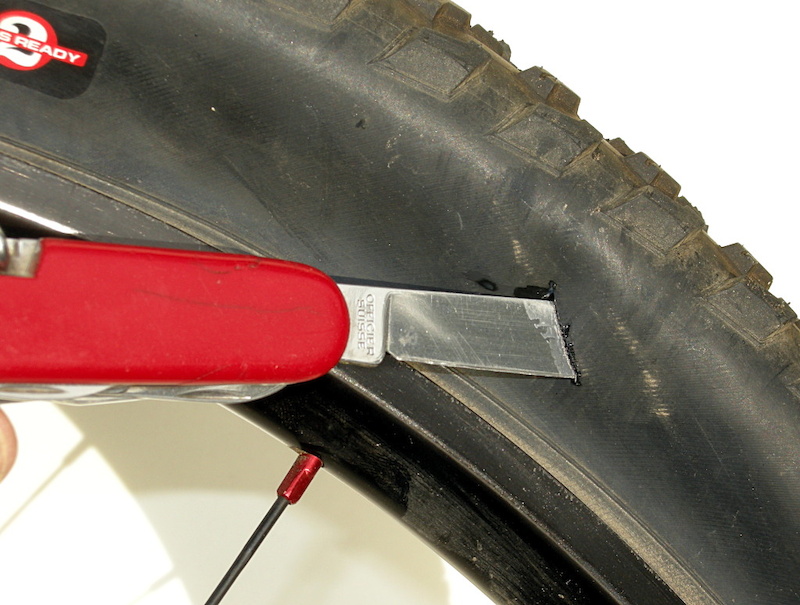 Leaks caused by a damaged mounting surface may require you to replace the entire wheel.
Leaks caused by a damaged mounting surface may require you to replace the entire wheel.
If you need to repair a tire damaged by a puncture, or you think your valve or mounting surface may be damaged, we can help!
Schedule your appointment on Ride Time today, and come to our service centre now in Winnipeg, to make sure you stay safe on the roads!
A slow tire leak is more than just a nuisance. A leak can lead to low tire pressure. Not to mention, prolonged running on an underinflated tire can lead to more extensive tire damage or even cause a dangerous blowout.
If you’re experiencing a slow leak, here are some things to look for:A tire puncture: It is a common misconception that a puncture will cause the tire to immediately go flat. However, in many cases the object that caused the puncture remains lodged in the tire and prevents the air from leaking out quickly.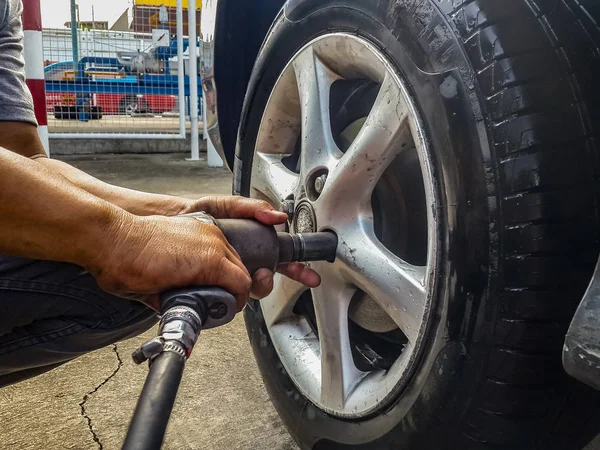 As with all tire leaks, it is important not to ignore a puncture. Eventually to object will either wear down and/or work its way out of the tire. For more on this read our article How to Repair a Tire with a Safe, Permanent Fix.
As with all tire leaks, it is important not to ignore a puncture. Eventually to object will either wear down and/or work its way out of the tire. For more on this read our article How to Repair a Tire with a Safe, Permanent Fix.
Wheel damage: Another common cause for slow tire leaks is damage to the area where the tire bead meets the rim. This type of damage is typically cause by the driver hitting the curb, taking a speed bump at high speeds OR those dreaded potholes! The impact deforms the wheel’s metal surface which may cause the tire to pull away from the mounting surface of the wheel.
Valve stem damage: The third most common cause for slow tire leaks is worn out or damaged valve stems. Time, use and exposure to elements can cause your valve stems to wear out and cause leaks.
Diagnosing your tire leak:
If your vehicle is equipped with TPMS, you will know right away if you have a leak. If the sensor light on your dashboard goes off, you inflate all the tires back to proper pressure and the light goes back on a few days later – you likely have a leak.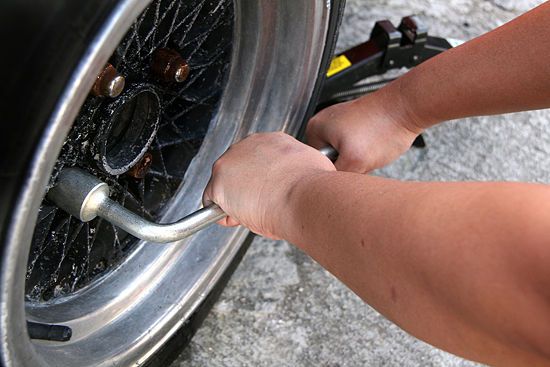 If your vehicle does not have TPMS, its important to check your tire pressure regularly.
If your vehicle does not have TPMS, its important to check your tire pressure regularly.
Once you’ve identified that you have a leak, use TECH Chek to locate the source of your leak. Simply spray the product all around the tire. Where the surface of the tire begins to bubble is likely the source of your leak.
It’s important to have your tire diagnosed by a professionally trained tire shop or mobile tire repair service as soon as possible. In the case of a puncture, you may want to use a tire repair kit to keep your tire properly inflated until you can have it serviced. The leak should then be permanently fixed using a proper tire repair consisting of a cured rubber stem and repair unit.
If the leak is caused by a damaged valve, a trained tire technician can typically replace the valve at a minimal cost. In some cases, however, the tire may need replaced.
If the leak is caused by a damaged wheel, a tire technician may be able to reseat and seal the tire using a bead sealer. However, if the damage to the wheel is significant, unfortunately that means you may need to replace the wheel itself.
However, if the damage to the wheel is significant, unfortunately that means you may need to replace the wheel itself.
To read more about the types of damage that can and cannot be repaired, click here!
A leak from a metal heating or plumbing pipe can be a real disaster. Puddles, flooded and swearing neighbors, damaged floors and walls ... Leaks need to be fixed urgently, and if there is no time or money to replace pipes, simple but effective methods will do.
A leak can occur for a variety of reasons: the pipe simply wore out, rusted, the welder did not work well, the water was not drained from the system in the country house and the pipes froze ... In any case, you need to act as quickly as possible to prevent a communal disaster.
The first and the easiest and fastest way to temporarily fix a leak, for example, on a metal pipe thread, is to use a medical bandage soaked in water and sprinkled with salt.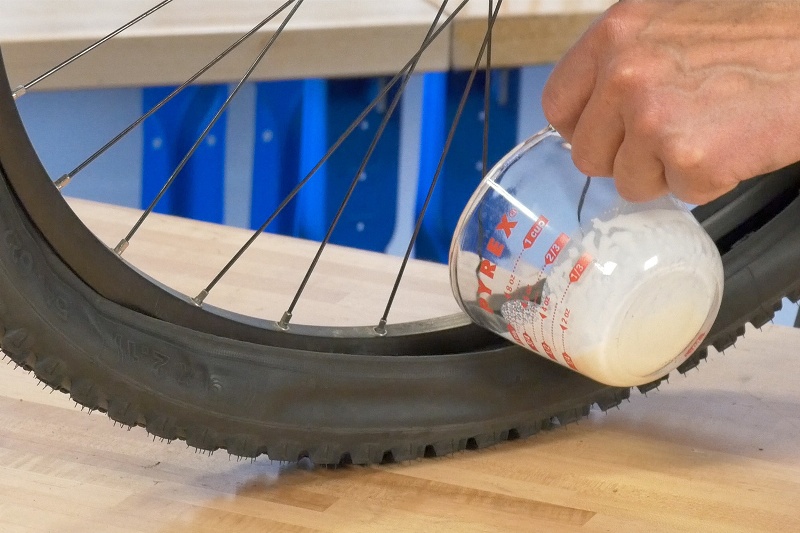 The bandage is wetted and wrapped tightly around the leak, each turn is accompanied by sprinkling with salt. This is a temporary way! Just to hold out until the arrival of the masters and the opportunity to replace or overhaul the pipe.
The bandage is wetted and wrapped tightly around the leak, each turn is accompanied by sprinkling with salt. This is a temporary way! Just to hold out until the arrival of the masters and the opportunity to replace or overhaul the pipe.
The second way to eliminate the leak is also associated with the use of a medical wide bandage. It is necessary to dilute the cement to the state of gruel and soak the bandage in the solution. Then, they wrap the place of leakage tightly, in several layers. The cement will harden in a couple of hours, sealing the leak. If it is decided not to change the pipe yet, you can clean the winding place with sandpaper and paint over. But still, this method of repair cannot be called long-term, although it is a more reliable option than a bandage with water and salt.
Third , one of the more popular options for repairing a crack in a metal pipe is to use a clamp. Factory clamps are sold in different sizes, you need to choose according to the diameter of the pipe. Rubber is placed under the collar, you can cut a piece, for example, from a bicycle tire, the top of a rubber boot, a thick work glove. A harness, rope, hose, flexible wire can replace the factory clamp.
Rubber is placed under the collar, you can cut a piece, for example, from a bicycle tire, the top of a rubber boot, a thick work glove. A harness, rope, hose, flexible wire can replace the factory clamp.
Important! Before starting the repair of a cracked metal pipe, it should be cleaned of rust and old paint, mark the place of the leak and dry it.
The fourth option is used if the water cannot be turned off, the clamp does not hold, and the cause of the leak is a fistula. In this case, you can cut a small conical wedge out of wood and drive it into the hole. You need to drive the wedges into the place of the leak very carefully, this is a temporary measure, but the owners will have the opportunity to do a thorough repair without a fountain from the pipe.
The fifth method involves the use of adhesive or cold welding. The place of leakage, in this case, must be dried, cut out a piece of rubber, plastic, fiberglass, flexible steel of a suitable size with a margin of two to three centimeters.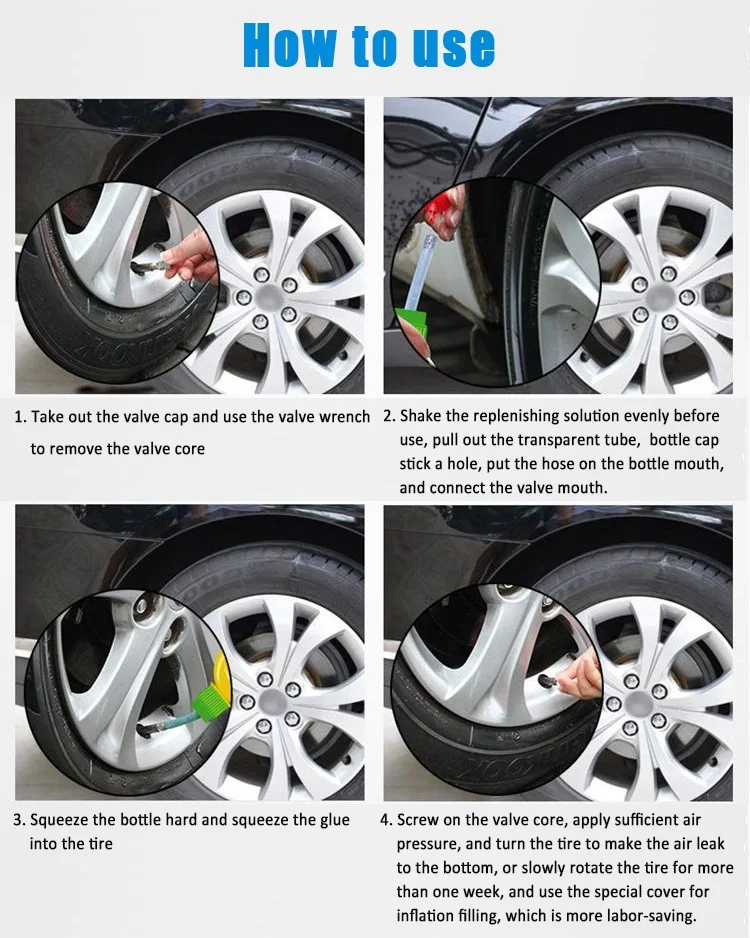 The material is lubricated with an adhesive, it is better to use epoxy, or cold welding, it is firmly pressed against the leak. You have to wait until the adhesive sets. There are varieties of ready-made cold welding of the consistency of plasticine, with such a composition you can simply cover up, plug a crack or hole. But having a piece of suitable material on top doesn't hurt.
The material is lubricated with an adhesive, it is better to use epoxy, or cold welding, it is firmly pressed against the leak. You have to wait until the adhesive sets. There are varieties of ready-made cold welding of the consistency of plasticine, with such a composition you can simply cover up, plug a crack or hole. But having a piece of suitable material on top doesn't hurt.
The sixth method, as practice shows, is the most reliable. This is a combination of the use of adhesive and a clamp. In this case, a piece of rubber, metal, plastic, fiberglass lubricated with cold welding or glue is pressed against the cracked pipe with a clamp. It is convenient that you do not have to hold the material while waiting for the glue to harden.
In any case, we strongly advise you to replace the emergency pipe as soon as possible. A crack, a leak is a sign that engineering communications need to be thoroughly dealt with, to replace leaky pipes.
More in this category: « What are the dowels for fixing insulation What is cold welding: types and features of application »
Top

Problems and leaks in the plumbing are caused by bad materials, unprofessional installers and the influence of operating time. Most often, all these reasons are combined, which accelerates the appearance of water leaks. Therefore, there is a need to urgently fix the leak of the water pipe with BCG sealant.
sealant If the pipes are metal, then their main enemy is corrosion. In old pipelines, pitting is rarely single. Over time, the pipe becomes like a fruit eaten by worms. That is when the moment comes when you need urgently eliminate its leak . The only way to save the plumbing and is to fix the leak by replacing the pipe, or by applying BCG sealant. At the end of the article, we will talk in detail about the BCG water pipe sealant, which quickly and efficiently eliminates all kinds of leaks .
Threaded connections are the weak point of metal pipes. If, in the old fashioned way, the junction of a water pipe leak was wrapped with linen, even coated with paint on top, then this does not save. Linen is an organic material and, over time, will begin to rot, and the protective paint will dry out and make the linen vulnerable, that is, it will begin to rot. To help fix a leak in a water pipe , replacing flax with modern plastic threads, tapes and pastes that wrap around a threaded connection can help. And, if you don’t want to unwind and wrap anything, then only BCG sealant will help eliminate the leak of the water pipe.
Corrosion is not terrible for plastic pipes. But, if, by mistake or because of cheapness, a pipe intended only for cold water was placed on hot water, then it can be inflated. It can crack and leak, or it can break completely.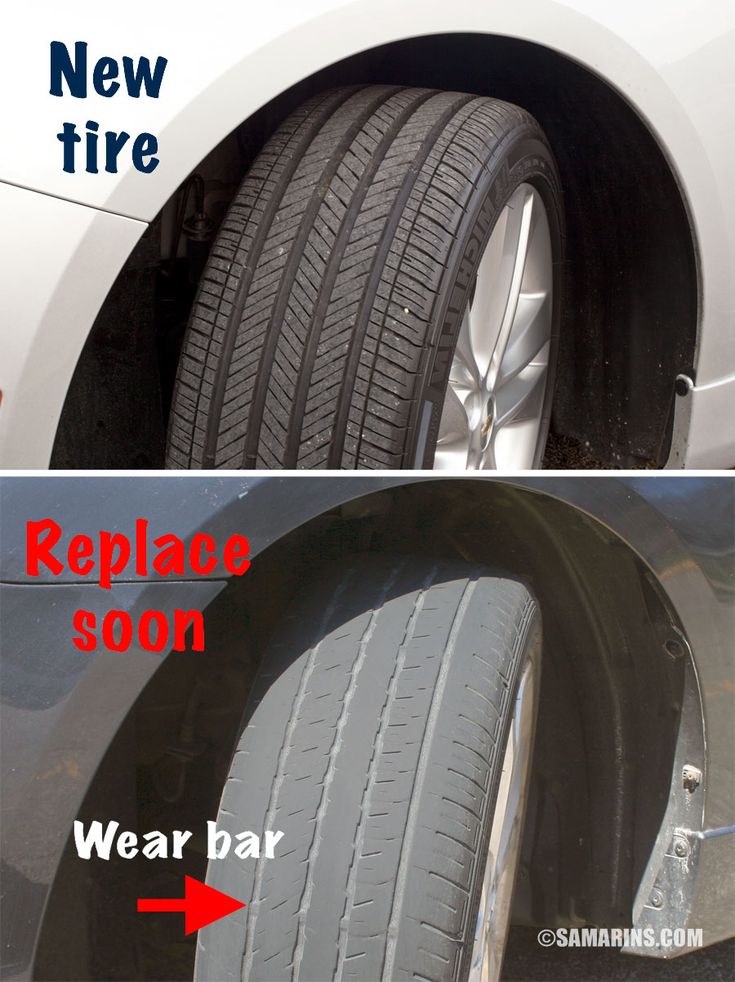 Such savings are unacceptable and even BCG water pipe sealant, which serves to eliminate leaks, will not help here.
Such savings are unacceptable and even BCG water pipe sealant, which serves to eliminate leaks, will not help here.
The most common defects in plastic pipes are poor quality welding and leaks at the junction of fittings with pipes. If there is no need to comment on careless welding, then fitting leaks are explained either by poor-quality installation or by the laws of physics. Where the metal of the fitting connects to the plastic hot water pipe, the metal and plastic do so at different rates when heated and cooled. As a result, a tight connection eventually turns into a gap, and a leak is formed that needs to be eliminated. Here, only replacing the fitting or BCG sealant will help fix the leaking water pipe.
An unpleasant defect of a plastic pipe is a crack that occurs when water freezes. Water, inevitably expanding when turning into ice, leads to the appearance of a very thin and long longitudinal crack, sometimes 20 centimeters. Even BCG sealant, which can fix plumbing leaks, rarely copes with such a long crack. The recipe is to replace the defective area and, as a result, eliminate the leak of the water pipe.
The recipe is to replace the defective area and, as a result, eliminate the leak of the water pipe.
If a water pipe leaks in an open area , then the repair will be troublesome, but there will be ways, materials and technologies to fix the water pipe leak. We will not even list all the ways to fix leaks: tying, "bandaging", cold welding. The internet is littered with all sorts of tips on how to fix a water pipe leak, including using BCG sealant.
Imagine: a cottage or summer house, finished with expensive materials. And, unexpectedly, a wet spot on the wall. It becomes clear that a water pipe hidden in the wall is flowing and it is necessary to urgently eliminate the leak. To fix the leak, you will be offered to break the wall and replace the pipe. They say that there are no other means to fix a leaking water pipe! While home maintenance professionals know that there is a BCG plumbing sealant that seals leaks. But if we apply this BCG sealant to fix leaks, no need to break the wall and the owner's bill looks more modest. This is the reason for the talk about the inefficiency or even the unsafety of BCG liquid sealants.
To fix the leak, you will be offered to break the wall and replace the pipe. They say that there are no other means to fix a leaking water pipe! While home maintenance professionals know that there is a BCG plumbing sealant that seals leaks. But if we apply this BCG sealant to fix leaks, no need to break the wall and the owner's bill looks more modest. This is the reason for the talk about the inefficiency or even the unsafety of BCG liquid sealants.
The plumbing sealant is called BCG 84. For almost 40 years in Europe and for the sixth year in Russia, not lazy or stupid people have been using BCG 84 sealant to fix a leaking water pipe .
German BCG Liquid Sealant is added to a water pipe, pressure is applied, the sealant protrudes out of the crack, interacting with the carbon dioxide of the outside air, forms crystals that close the holes and stops the water pipe from leaking. It's like a plaster cast on a fracture. Yes, and visually it looks like a stone growth that will withstand temperature and pressure.
It's like a plaster cast on a fracture. Yes, and visually it looks like a stone growth that will withstand temperature and pressure.
And one more detail. Since we are talking about repairing plumbing leaks, it is important that BCG 84 Sealant does not harm the body, getting into it with water when it fixes a leak.
The German Food Industry Institute confirms that BCG 84 plumbing sealant is completely harmless for sealing leaks and even recommends its use in repairs to food industry plumbing. Such a sealant is universal, and it is used not only to eliminate leaks.
